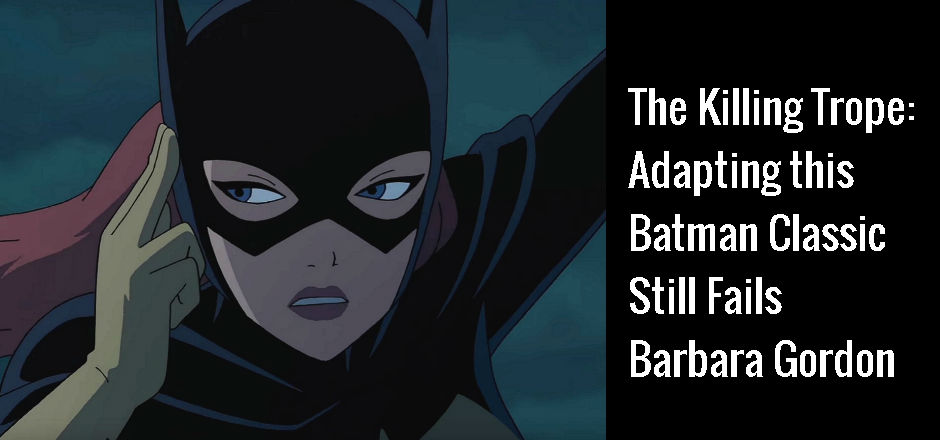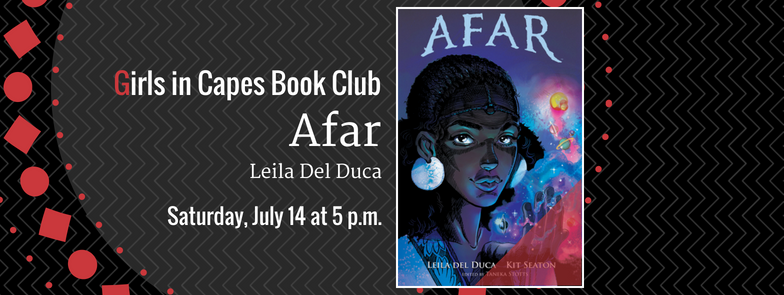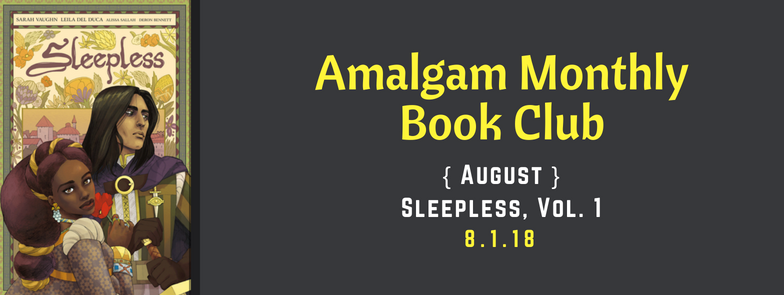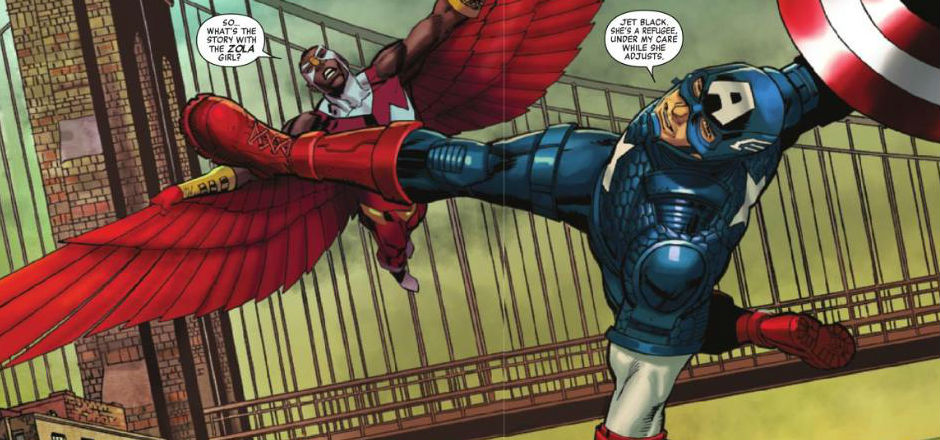The Killing Joke is often called “the definitive Batman story.” It has a history of being as equally lauded for its fascinating portrayal of the psychological parallels between Batman and The Joker as it is criticized for its use of Barbara Gordon. And both comments on the overall quality of the story are entirely true. It’s a fantastically-written story, but it’s also undeniably a very problematic, even harmful one. How a story can be both, however, is not easy to understand for some.
People seem to struggle to comprehend the reasons behind the outrage lobbed at some of pop culture’s representation of women. The problem is not that women are subjected to violence. Even in fiction, we aren’t so disconnected from reality to pretend that women remain untouched by brutality. It would require some impressive cognitive dissonance to ask fiction to not show violence against women when we struggle with it daily.
The real problem exists when whatever brutality is imposed on a female character for the sake of examining, expanding or developing a male character. This is known as the “Women in Refrigerators” trope. The female character is only a vessel of the male character’s feelings. She isn’t a person, certainly not a person experiencing unspeakable brutality.
The focus on the effects of this violent act is not on her or how she deals with it, but on how the men around her do, because it is their pain and not hers that matters in the story. She is a plot device, a chalk outline, empty of anything inherent to her own character and there to be filled with the emotions that can be provoked in the male characters around her. The violence heaped upon her has no intended role in her narrative, but on developing that of her male counterparts.
[blocktext align=”left”]The real problem exists when whatever brutality is imposed on a female character for the sake of examining, expanding or developing a male character.[/blocktext]The Killing Joke’s Barbara Gordon is a perfect – and oft-cited – example of this trope. The biggest affront to Barbara in The Killing Joke is that her mind, body and spirit are worth less than her own father’s sense of honor and justice. The protection of an esoteric idea of justice is, ultimately, the prize that’s hard won in the story, and it was paid with Barbara’s body, her dignity and, in the animated adaptation, her sense of self.
Addressing the use of Barbara in this story seems to have been one of the main concerns in the animated movie adaptation of The Killing Joke graphic novel, which came out this summer. Allowing Barbara to be a person, her own person, appears to have been a goal in the adaptation. Unfortunately, the extra 40 minutes or so of Batgirl-centered plot did very little to help Barbara become more than a step in The Joker’s plan to destroy Commissioner Gordon’s honor and to play with Batman.
The added Batgirl storyline focuses on an impulsive, immature and emotionally-compromised Barbara Gordon who, with each word and action, proves herself ill-suited to bear the burden of being Batgirl. She wears the cape for the thrill of it and places herself in dangerous situations without a thought in order to impress Batman and kick-start the love affair she pines after.
In fact, when not wearing the Batgirl cape, all of Barbara’s interactions with her (gay cliché) co-worker focus exclusively on her attraction to her “boss,” her need for acknowledgement from him and her desire to ignite some sort of sexual relationship with him. Her entire character is driven by some childish wish to prove herself to her mentor and receive his acknowledgement as a partner and as a sexual woman. Batman in turn adds fuel to her fire by being dismissive, cutting and overprotective with her.
[blocktext align=”right”]Her entire character is driven by some childish wish to prove herself to her mentor and receive his acknowledgement as a partner and as a sexual woman.[/blocktext]Batman’s lack of trust in Batgirl’s capabilities, and the havoc it wreaks in Barbara’s character, is excused by a deliberate focus on her impetuous nature. Batman’s tendency to shield her to a breaking point is justified by an inability on her part to take her responsibility as seriously as he would want her to. Basically, Batman’s domineering, condescending and paternalistic behavior towards Batgirl is legitimized by making Barbara behave in unreliable, reckless and impulsive ways.
In fact, instead of humanizing or bringing depth to her character, considering what happens to her later when the movie goes into the story of the graphic novel, the added storyline ends up turning into a strange justification for it.
By presenting Barbara as unsuitable for the role of Batgirl, the film adaptation appears to present the idea that in some way, what The Joker did to prompt her into becoming Oracle ended up being for the best.
The post-credits scene presents a wheelchair-bound Barbara contently locking herself in a small, tight room and embracing her role as Oracle, a helping hand safely secured away from the action. Where she was incompetent as Batgirl for failing to be exactly like Batman, as Oracle she can finally acceptably fulfill her goal by serving other people’s purposes and staying out of Batman’s way until he needs her.
The Killing Joke comic didn’t set out to create the Oracle character. In fact, after her brutal assault, Barbara is never shown or mentioned again in the original comic. It’s a commendable effort by other authors in later storylines to rescue and revitalize Barbara as Oracle after the victimization she experienced in The Killing Joke.
However, by including that post-credits scene in the film and connecting it with the initial 40 minutes of the adaptation that focused on Batgirl, this new twist to the story seemed to imply that Barbara willingly gave up her ill-fitting Bargirl gig because she was meant for something better – not for her, but for everybody else.
Adding that final scene as a prelude to Barbara’s new role as Oracle is particularly discomforting because she ends up a lot more useful to Batman as Oracle than she apparently ever was as Batgirl.
[blocktext align=”center”]Are we supposed to see her attack as a blessing in disguise? Was the attack ultimately a lesson to be learned?[/blocktext]
Moreover, this post-credits scene is the only one centered on her after The Joker’s violent attack. When she’s in the hospital, the concern is centered on Commissioner Gordon’s safety, and when The Joker tortures her father with the horrifying pictures her took of her, again, it’s all about the effect these photos of Barbara’s brutal sexual assault have on her father.
Whatever feeble attempt at humanizing her during the first arc of the movie turns to ashes once more in the face of the objectification of her character in the second arc. This is mostly because the attempt at humanization did nothing in the way of dignifying her character as opposed to just getting the audience to care a little more about what happens to Barbara later on.
It’s also particularly uncomfortable to watch an added storyline meant to avoid the objectification of Barbara inherent to the original story by having her objectified by another criminal, Paris, and being perfectly okay with it. Thrilled, in fact. Or flattered, as she calls it herself. Batman is the one that tells her she is being objectified, and she doesn’t care until her lesson is learned.
Even in the context of this story, the whole lesson in objectification feels disjointed and inadequate. Especially when one considers what follows next in the original graphic novel storyline, but also when a gratuitous sex scene between Batgirl and Batman comes along and is followed by complete dismissal on Batman’s part. This drives Barbara to the edge and prompts her decision to give up being Batgirl.
However you look at it, this adaptation of The Killing Joke constantly feels like Batgirl is more of a burden on Batman than an actual partner. In fact, he outright tells her that she’ll never be his equal. The film gives the impression that those extra minutes of Batgirl storyline are there so that Barbara can finally arrive at Batman’s conclusion that she is not ready or even worthy of being a crime-fighting vigilante like Batman because she feels too much. If that’s a statement made because she is a woman or simply young is anyone’s (offensive) guess, but it’s still a blanket statement on her person that feels forced, much like her final decision to quit Batgirl.
The attempt to further Barbara’s character is especially confusing when one considers that there was no attempt made at bridging the two narratives– the one focused on Barbara’s last crusade as Bargirl and the original Joker-centered storyline of the graphic novel. Barbara remains, in the second arc of the movie, an object violently used to further her father and Batman’s narrative, exactly like in the original graphic novel because, once more, the story was never about her or even remotely concerned with her.
Ultimately, this adaptation fails Batgirl even worse than the graphic novel originally did. If the writers attempted to deepen her character so she was less of an objectified victim in the end, she failed to come across as anything but a childish, petulant girl unable to understand the severity of the situation she’s in – and she’s still brutally objectified in the end. If they wanted to restore to Barbara some of the agency that was stripped away from her in the original story, the effort failed dramatically as her decision to quit Batgirl comes as a lesson silently imparted by Batman’s stoicism and not something organic to who she was.
All throughout the movie, Barbara’s life was dictated, shaped and crushed by the decisions and choices made by the men around her, from Batman and Paris (the criminal obsessed with her) to The Joker. Both Barbara and Bargirl deserved better.
—
Lorraine Acevedo Franqui writes for Girls in Capes from Puerto Rico and holds degrees in English Literature and Psychology. Her main interests are young adult lit, anything related to The Legend of Zelda and Kingdom Hearts, assorted shounen mangas and cats.






